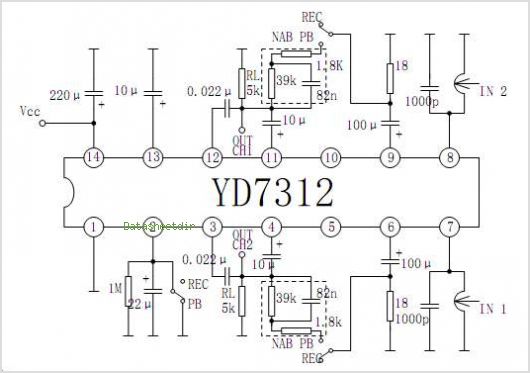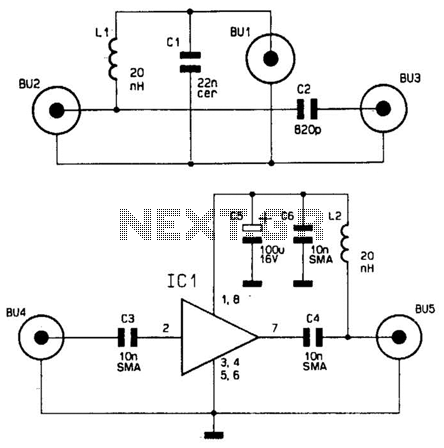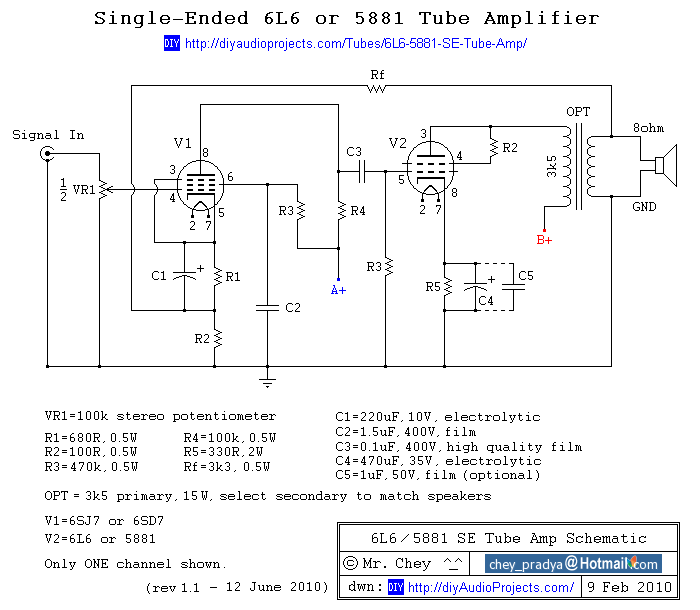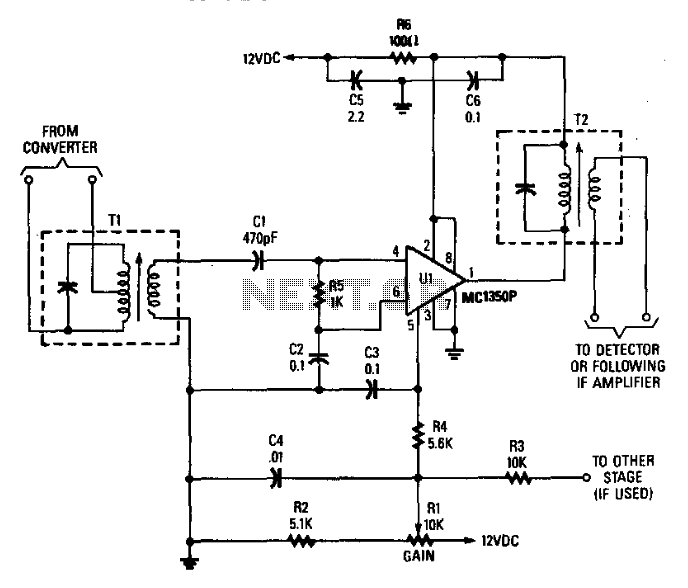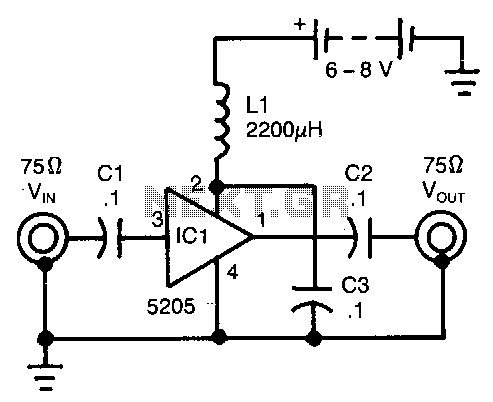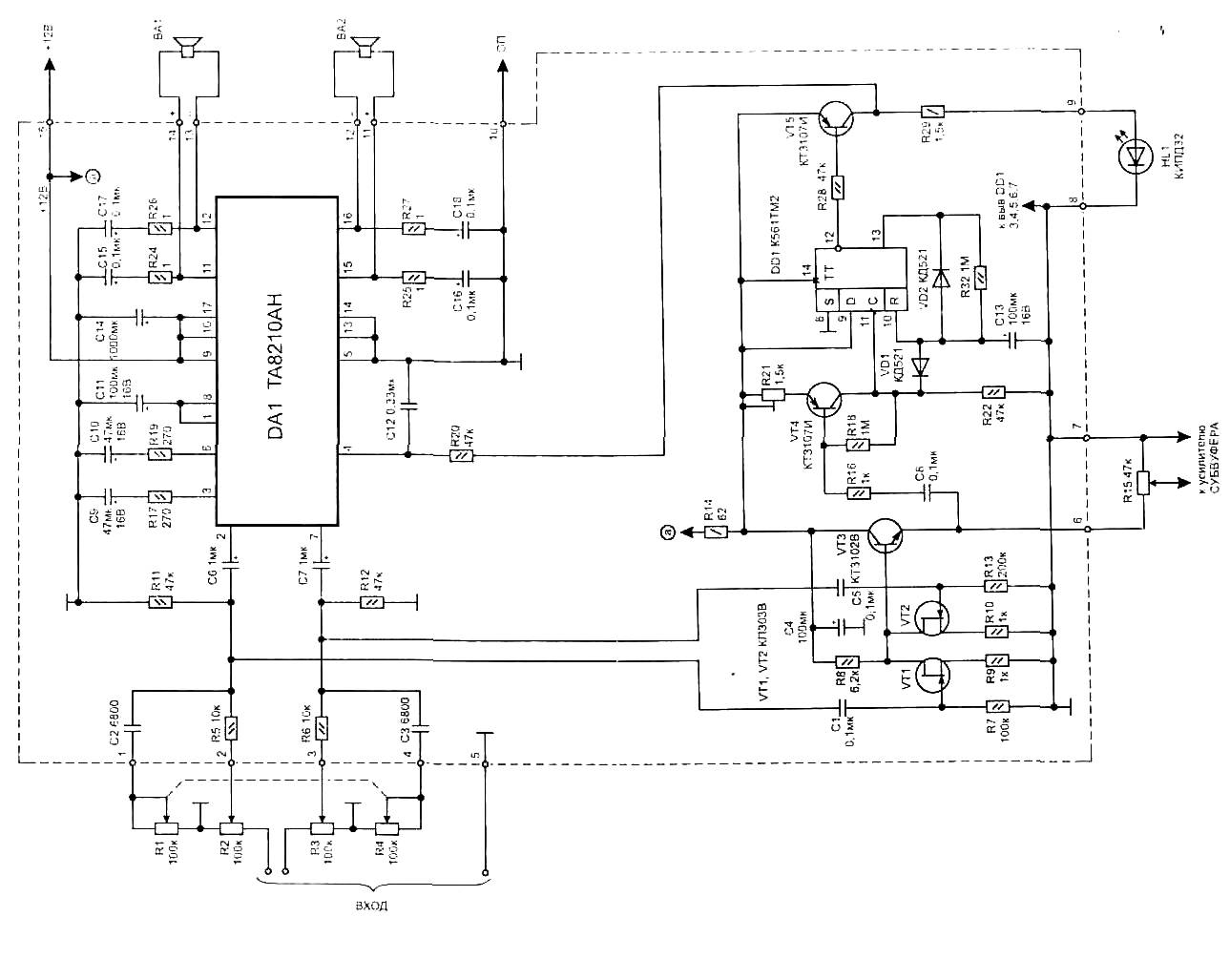
guitar amplifier schematics
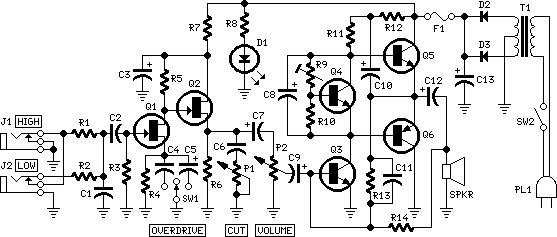
In all instances where Darlington transistors serve as output devices, it is crucial for the sensing transistor (Q4) to maintain close thermal contact with the output transistors. Consequently, a TO126-case transistor type was selected for ease of mounting onto the heatsink, positioning it in proximity to the output pair.
The use of Darlington transistors in output stages is prevalent due to their high current gain and ability to drive heavy loads. In this configuration, the sensing transistor (Q4) plays a vital role in monitoring the temperature of the output transistors to prevent thermal runaway. Thermal runaway occurs when an increase in temperature causes an increase in current flow, which further raises the temperature, leading to potential device failure.
To mitigate this risk, the TO126-case transistor is designed for efficient thermal conduction. Its physical characteristics allow for a secure attachment to the heatsink, ensuring that heat generated by the output transistors is effectively dissipated. This close thermal coupling enables Q4 to accurately sense any temperature changes and react accordingly, typically by controlling the biasing of the output stage, thereby protecting the transistors from overheating.
In a typical schematic, the output transistors would be represented alongside the sensing transistor, with clear indications of their connections to the heatsink. The thermal path must be minimized to ensure rapid response to temperature fluctuations. Additional components, such as resistors and capacitors, may be included in the circuit to stabilize the feedback loop and enhance performance. Proper layout considerations should also be made to optimize thermal management and electrical performance, ensuring that the entire assembly operates reliably under varying load conditions.In all cases where Darlington transistors are used as the output devices it is essential that the sensing transistor (Q4) should be in as close thermal contact with the output transistors as possible. Therefore a TO126-case transistor type was chosen for easy bolting on the heatsink, very close to the output pair.
🔗 External reference
The use of Darlington transistors in output stages is prevalent due to their high current gain and ability to drive heavy loads. In this configuration, the sensing transistor (Q4) plays a vital role in monitoring the temperature of the output transistors to prevent thermal runaway. Thermal runaway occurs when an increase in temperature causes an increase in current flow, which further raises the temperature, leading to potential device failure.
To mitigate this risk, the TO126-case transistor is designed for efficient thermal conduction. Its physical characteristics allow for a secure attachment to the heatsink, ensuring that heat generated by the output transistors is effectively dissipated. This close thermal coupling enables Q4 to accurately sense any temperature changes and react accordingly, typically by controlling the biasing of the output stage, thereby protecting the transistors from overheating.
In a typical schematic, the output transistors would be represented alongside the sensing transistor, with clear indications of their connections to the heatsink. The thermal path must be minimized to ensure rapid response to temperature fluctuations. Additional components, such as resistors and capacitors, may be included in the circuit to stabilize the feedback loop and enhance performance. Proper layout considerations should also be made to optimize thermal management and electrical performance, ensuring that the entire assembly operates reliably under varying load conditions.In all cases where Darlington transistors are used as the output devices it is essential that the sensing transistor (Q4) should be in as close thermal contact with the output transistors as possible. Therefore a TO126-case transistor type was chosen for easy bolting on the heatsink, very close to the output pair.
🔗 External reference
